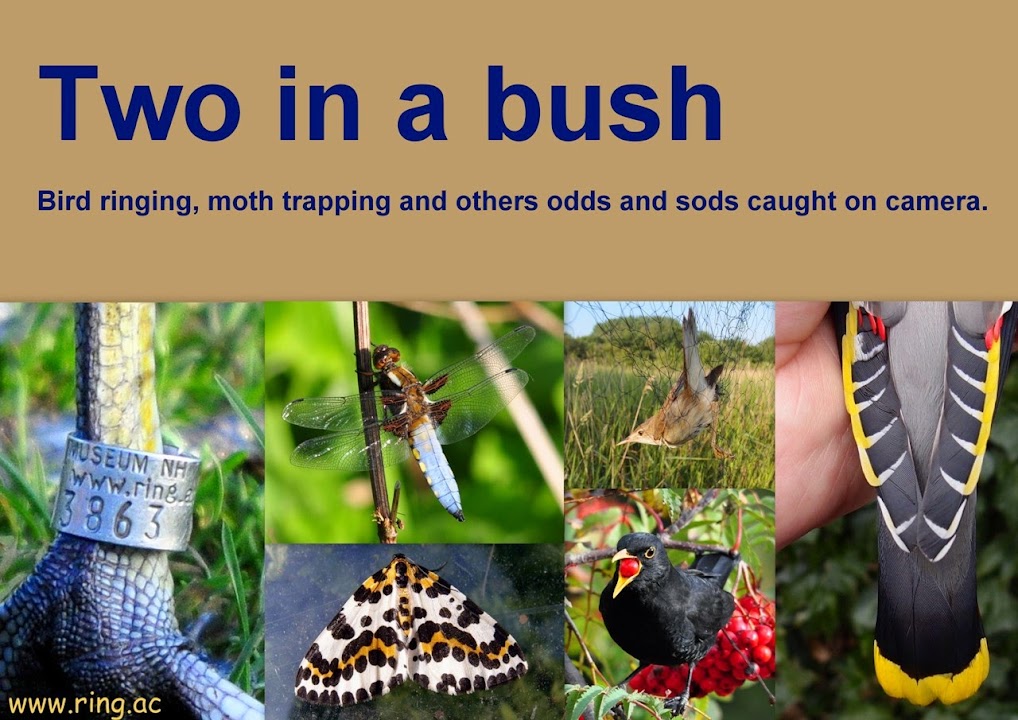Now I like to start the day with 3 mugs of coffee so I used that time to keep an eye on the progress of the band of rain on the rainfall app and it looked like it would clear Billinge around sunrise so I decided to head out. When I arrived on site it was still raining but I set up anyway, keeping the nets closed of course, so I would be ready for a quick start when the rain cleared. The rain stopped shortly after sunrise and pretty much as the rainfall app indicated so I quickly opened the nets. It was still only half light because of the cloud cover but a few small flocks of Redwings had already started moving with all of them heading south.
The breeze was quite fresh but the net rides were sheltered by the tree cover and more importantly by higher ground which provided a significant wind shadow. The catching rate was quite good but then the number of Redwings moving wasn't bad either and both increased as the morning went on. Visibility was really quite poor at times with low cloud and occasional mizzle but it didn't stop the birds moving and around 2,000 Redwings went south over the course of the morning but that is only a rough estimate.
There were other bits and bobs moving south, not that I had time to take much notice, and there were a few Goldcrests moving through the bushes. I started packing up shortly after 11am and the next to last bird extracted from the nets was a control Goldcrest. This control Goldcrest turned out to be the most interesting bird of the morning but because of its age and tail shape rather than the fact it had been ringed elsewhere. All ringers would say that they age and sex every bird they catch with an equal amount of diligence but controls often get a little more scrutiny because another ringer may have aged and sexed it when it was first caught and the passage of time between ringing and recapture can add to the information on age if enough time has elapsed.
Goldcrests are mainly aged on the shape of the tail feathers with the adult tail being described and illustrated as being quite rounded while the tail of first-year birds are sharply pointed. Svensson's ageing and sexing guide warns against the ageing of intermediates and while it is clear on that point there is inevitably a degree of subjective interpretation. Most ringers don't get to handle many known age Goldcrests and that is where the problem lies as it is too easy to assume that adults should have quite rounded tail feathers even though that is not what Svennson and some of the other literature actually say.
So I had a control Goldcrest in my hand and on first glance the tail looked quite pointed but the tail feathers were on the broad side and quite glossy which is more indicative of adult. Had it been a new bird I may not have given it the same level of scrutiny but then that is impossible to know after the fact. It certainly wasn't a stand out first-year, nor was it a stand out adult and with hindsight I would like to think I would have left it unaged had it been a new bird but, at the risk of being honest, I may have lent towards it being a first-year.
When I am out ringing I frequently exchange texts with David Norman of Merseyside Ringing Group, who rings at a site 16km south of Billinge, and he recognised the ring number as being a MRG bird. It transpired that it had been ringed on the Wirral as a first-year male in October 2016 which confirmed it was over a year old. This made it more interesting as it was an adult (2y+) and its tail shape certainly reinforces the advice in Svennson that intermediates should be left unaged. It wouldn't surprise me if this tail shape is quite common in adults and it is the lack of recaptures of known age birds that limits our understanding of tail shape and ageing of this species.
 |
| Adult Goldcrest tail 20/10/17 |
 |
| It is not unusual for me to leave a few Goldcrests unaged but I may just start leaving a few more unaged now I have seen the tail shape of this adult. |
That was the 20th and the prospects for the arrival of Brian today were considerably worse but I decided to put my faith in technology (rainfall radar) and checking conditions on the ground. Yes it was forecast to be even windier but topography protected the net rides and the wind is generally that bit lighter around dawn. I only set a couple of nets as there was a higher risk of showers in the forecast but the rainfall radar showed they fizzled out before they reached the site during the time I there (occasionally technology is wonderful).
It was amazing to see a total of around 800 Redwings and a few other birds moving into such a strong headwind, especially as a strong southerly component in the wind often kills any movement at Billinge stone dead. The Redwings generally stayed low and appeared to make good headway but a lone, higher flying, Swallow made more laboured progress and clearly struggled against the strong headwind as it battled south.
I packed up after a couple of hours as the wind was starting to get stronger but I still managed to catch 15 birds before Brian really kicked in. Totals for 21/10/17 were Goldcrest 1; Song Thrush 1; Redwing 13.


No comments:
Post a Comment